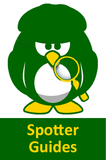School Visits
|
Visiting with Children
The Park is open to the general public so you will not have exclusive use. It is a secure site with a fenced perimeter and a gated entrance/exit. There are clearly defined grass paths in the meadow that are usable by wheelchairs, mobility scooters and pushchairs, although they are more difficult to navigate when the ground is wet. We plan to install hard paths when funding permits. The woodland paths can be more difficult to use with wheelchairs etc, as there are hedge banks that cross the marked out path which has a woodchip surface.
The Park has uneven ground and stumbling, falling and climbing hazards, stinging nettles, thorns and brambles; seasonally there are poisonous fungi and berries to watch out for, as well as insect stings. Wear waterproof outdoor clothing appropriate for the season and footwear suitable for walking on open ground.
Mobile phone reception is strong in case of emergencies. As a back up to your own first aid kit further medical supplies can be found at the local Community Library next to the car park during opening times. The Park does not have buildings or shelter, but in very inclement weather shelter can be provided at the Community Library.
There is a Code of Conduct for dos and don’ts whilst in the Park.
The Park has uneven ground and stumbling, falling and climbing hazards, stinging nettles, thorns and brambles; seasonally there are poisonous fungi and berries to watch out for, as well as insect stings. Wear waterproof outdoor clothing appropriate for the season and footwear suitable for walking on open ground.
Mobile phone reception is strong in case of emergencies. As a back up to your own first aid kit further medical supplies can be found at the local Community Library next to the car park during opening times. The Park does not have buildings or shelter, but in very inclement weather shelter can be provided at the Community Library.
There is a Code of Conduct for dos and don’ts whilst in the Park.
Supporting The National Curriculum
You can build use of the Park’s resources into your teaching plans. We hope to encourage sharing and build a collection of teaching material with links to The National Curriculum where required. The website provides information on the birds, mammals, insects, reptiles, flowers, plants and trees that can be seen in the Park.
You may want to plan for a session in the Park. To inspire you, we have prepared some suggestions for activities and areas where they support The National Curriculum. Just click through the tags below.
You may want to plan for a session in the Park. To inspire you, we have prepared some suggestions for activities and areas where they support The National Curriculum. Just click through the tags below.
-
Nursery/Reception
-
Years 1 & 2
-
Years 3 & 4
-
Years 5 & 6
-
Secondary/Tertiary
<
>
Early Years Foundation Stage ‘Knowledge and Understanding of the World’
|
Explore the natural world in the Park, learn about the amazing plants and animals that live on our doorstep:
|
Key Stage 1 Science
- Creatures - Explore and compare the meadow and woodland habitats in the park and the amazing creatures that live in them - mini-beasts, birds and mammals.
- Growing Plants - Learn what plants really need to grow and survive explore the wonderful world of plants in the park. Find prickly plants, soft and silky plants, trees, mosses and grasses.
- Bug Hunter - Meet some of the natural world’s smallest inhabitants – the mini-beasts that do so much to clean up and recycle in the park. Enjoy an up close exploration of those creepy, crawly and wriggly mini-beasts and discover their fascinating life cycles.
Key Stage 1 Geography and Maths
- Where am I? - Learn how to explore the grassland, orchard and woodland in the park using maps and compass points.
Key Stage 2 Science
- Mini-beasts - Discover the weird and wonderful creatures in the different habitats found in the park. Identify the different habitats: collect and identify mini-beasts who live there and learn who eats who in this secret world.
- Land Safari - Explore the grassland and woodland habitats in the park: spot who’s hiding under the logs and find out who the ladybird is eating in the long grass and who might be eating him or her.
- Little Rotters - Meet the natural world’s greatest recyclers – worms, enjoy an up close exploration of those wriggly recyclers and their fascinating life cycle.
Key Stage 2 Art and Design
- Painting & Drawing - Capture the true sense of the natural world by sketching your choice of attractive flowers, plants and trees that live in the park.
Key Stage 2 Science
- Habitats and Life-cycles - Take an in-depth look at the habitats of mini-beasts in the park, find and identify these amazing creatures and their important role in the natural world. Discover the incredible adaptations of invertebrates, find out which ones fly, walk, and burrow. Search for larvae and pupae and study the life-cycles of invertebrates that make their home in the grassland and woodland in the park
- From Flower to Seed - Investigate the wonderful variety of flowers and plants in the park in spring, summer or autumn season, discover who pollinates what and why and disperses the seeds.
Key Stage 2 Science, Geography, Citizenship, Design Technology
- Earth’s Energy - Look at the fuels we use to make energy, how many can we see in the park, investigate wind, wood and solar power design and test a wind turbine and make electricity.
Key Stage 2 Geography, Maths
- Orienteering - Explore the park in a different and exciting way with orienteering to gain experience in the use of compasses and maps through practical outdoor experience.
Learning resources specifically for senior schools, colleges and universities are not available currently. This will be provided in collaboration with local senior schools and colleges.
Spotter GuidesWhat can you find in the Nature Park?
We have nine down-loadable Spotter Guides. Five for bugs and mini-beasts, birds, butterflies and fungi and another four, one for each Season showing you what to look out for. Download one (or all!) of our Guides and take them round the Park to see what you can find. |















